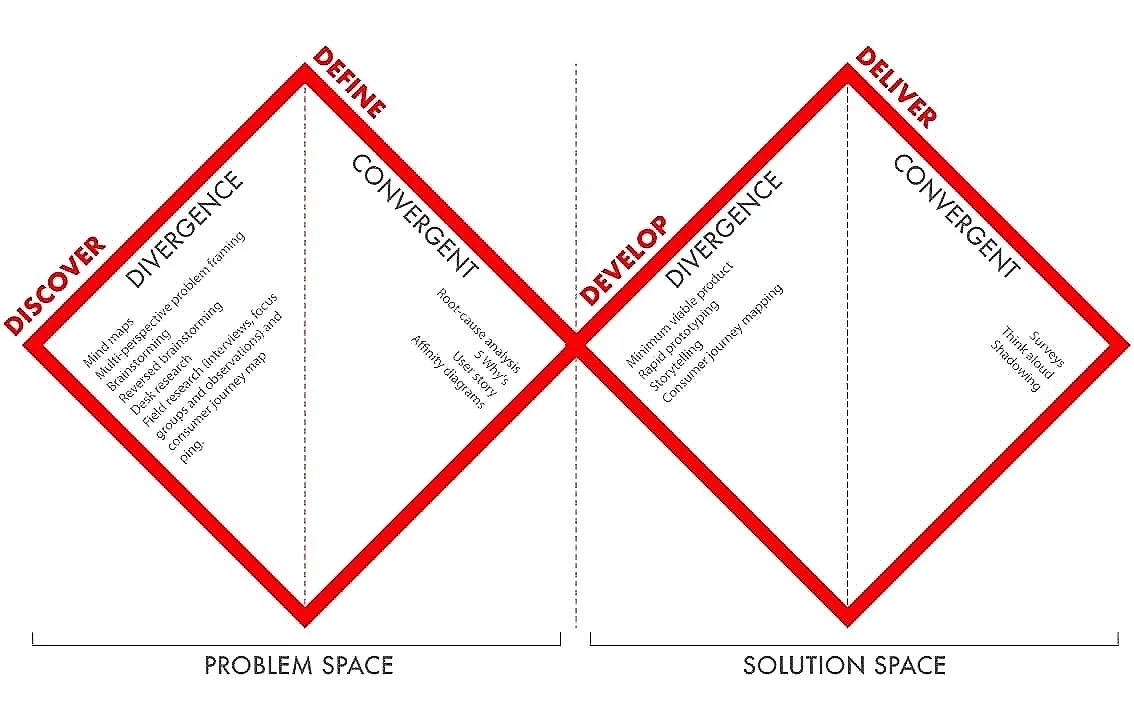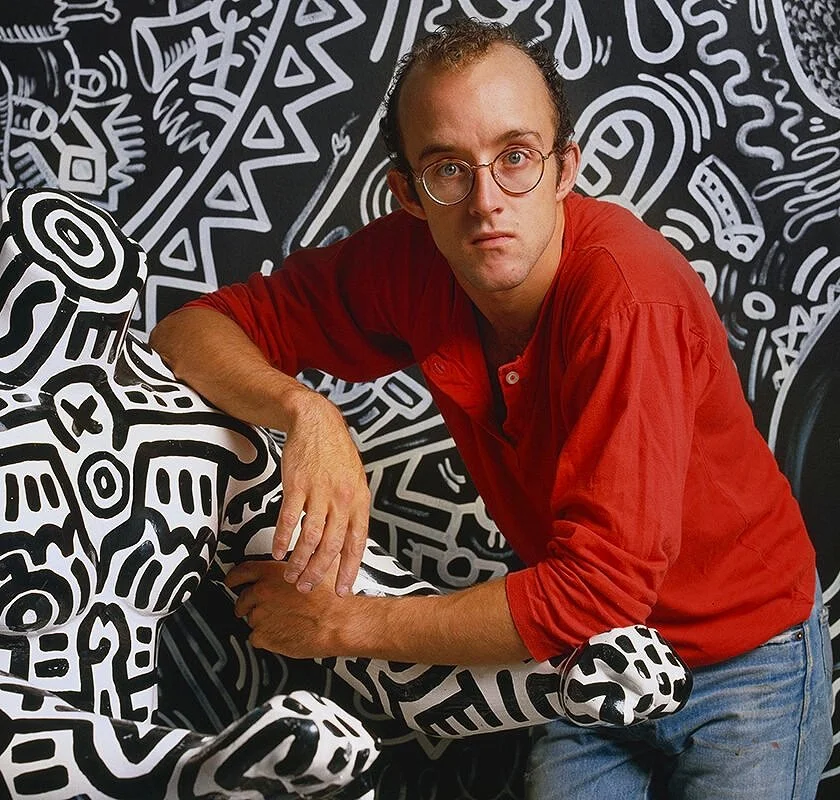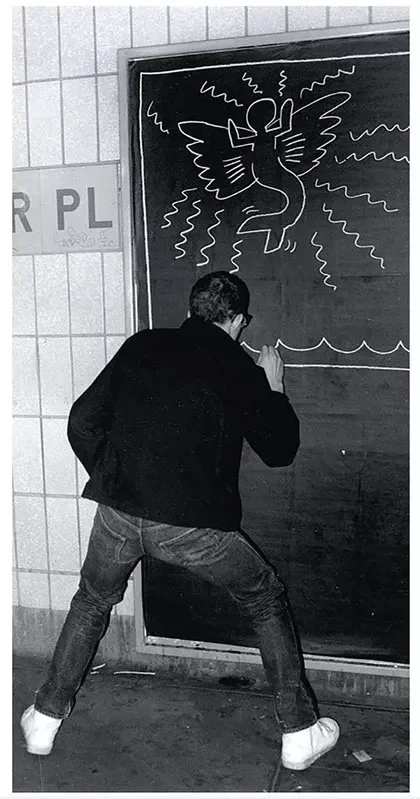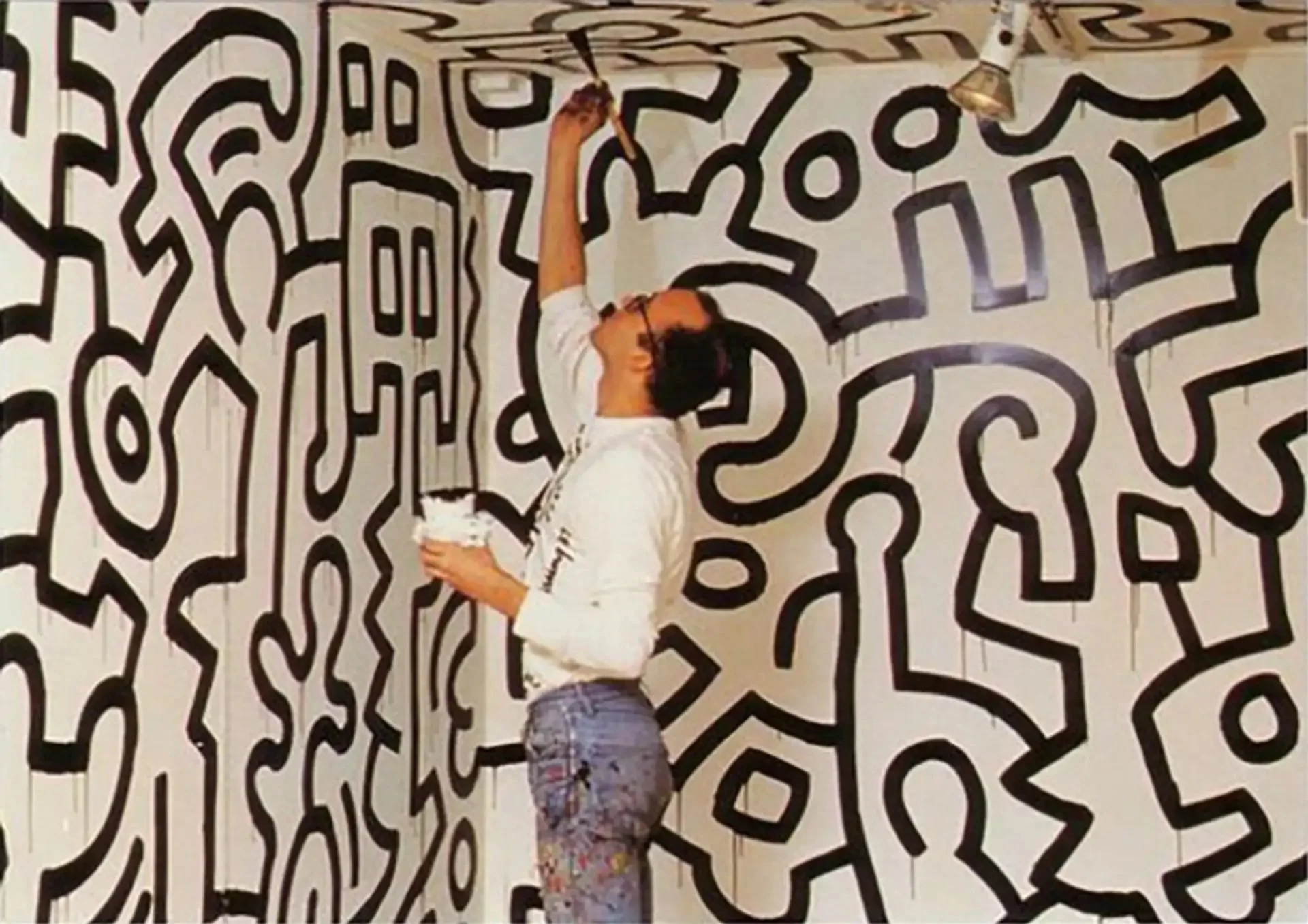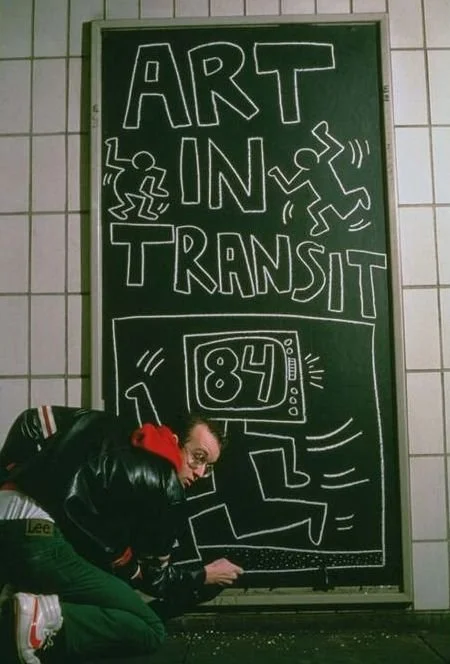Thoughts on Ideas.
Task 5:
This week's challenge is all about finding different ways to think, whether through art, design, philosophy, or science. We have to pick a thinker or process and sum it up in a black-line drawing by looking at theories and process models that can help us develop ideas. I have overworked week four and fell behind on this week's task; thus, I will keep this project quick and simple.
Learning objectives:
Research and explore different ways of thinking.
Imagine and communicate a selected way of thinking through a line drawing.
Document and communicate my working process on my blog.
Participate in and reflect upon debate on the ideas wall.
Manage my independent learning through good planning and self-direction.
Well-known “Design thinking” methods:
There are various design thinking methods; however, I chose ones I am familiar with and often use. First, there are four steps in the Double Diamond Design Process: discovery, definition, development, and delivery. These stages work like a map, helping me organize my ideas and streamline my creative process. It also prompts me to take the necessary step back by going back to the first diamond to understand that problem and the people it directly affects before attempting to solve it. It is the perfect way for me, and I have been using it for five years now.
Second, The Five Non-Linear Processes are Empathy, Define, Ideate, Prototype and Test. These are the stages of building customer empathy, figuring out the user's problem, developing ideas, creating prototypes and testing. The ultimate user is at the heart of this process. I use this method a lot when communicating with clients. It helps designers like myself manage our thoughts and ideas in the right place and deliver a better outcome—lastly, the Three Design Thinking Phases: Inspiration, Ideation, and Implementation. Inspiration comes from observing things and people in the real world, which is the first step in developing a product or service. Within the Ideation phase, authors emphasize allowing ideas to flow without judgement until the brainstorming sessions end. The implementation stage is where the end product or service is built. During this stage, prototyping plays an important role, and testing in a small and carefully selected sample of users contributes to developing a groundbreaking product. These three phases are the core steps of every design project.
Keith Haring: a popular artist & activist known for his colourful works and his iconic motifs :)
“Who cares if you make art? What is making? Seeing is making. Being is making. Not seeing is making. Making is making. Only if someone is seeing. The person in the subway is screaming, nobody is listening, but everyone is listening and seeing and making and being.”
Reading about Keith Haring reminds me of how uptight, self-controlled, and risk-averse I am. Haring believed in something and fought for it until he became an icon. His approach to design is haphazard but influential. His drawings represent characters, objects, and animals symbolically. Each drawing tells a story but evokes an emotional response from those who see it. In an interview, he talks about how he doesn't need a signature on his drawings because it's his signature. This simple line is the most essential element distinguishing Haring's style from everyone else's. Anyone who comes across his work will immediately recognise his line drawings that never cease to flow. He never loses his signature; whether using markers or chalk, felt tip pens or ink, acrylic or spray paint always symbolises him.
Keith Haring’s interviews + documentaries + artworks:
“If it is not regarded as ‘sacred’ and ‘valuable,’ then I can paint without inhibition and experience the interaction of lines and shapes. I can paint spontaneously without worrying if it looks ‘good,’ and I can let my movement and my instant reaction/response control the piece, control my energy (if there is any control at all) … It is temporary and its permanency is unimportant. Its existence is already established. It can be made permanent by the camera.”
Keith Haring’s design process:
“It seems to me the only thing to do in this world is to do something. The doing is what the world is. But only I can make these things. These things are called 'The Works of Keith Haring'.”
- Keith Haring
Inspired by graffiti artists, Keith started drawing in New York subway stations with markers, other times with chalk, filling up empty poster spots with chalk that people walked past daily. His style was all about repeating the same shapes over and over again in bright, colourful colours outlined in black on various media. He also experimented with several printmaking techniques in his career, such as lithography, screen printing, etching, woodcuts and embossing. Moreover, what was really ingrained in me was his use of lines. Most of the time, the lines were the same thickness, but sometimes the thickness would change depending on what the line was trying to say, giving the lines some sound or voice.
Nonetheless, within the design thinking process, we get to know our users, ask questions, think outside the box, and develop creative solutions that we can put into practice and test. After a thorough reading, I could interpret Keith Haring's design process as aimed at creating art accessible to everyone, interacting with different types of people. He didn't think about what he wanted to do or what he wanted to draw - he just did it. The foundation of his work is his love of simple lines and the use of bright, flat primary colours. These two elements provide the basis for understanding and interpreting his work process. His design process methods are unforgettable. Even after all these years, people remember him as if he were still alive.
My black line design thinking process - inspired by Keith Haring :
Self-Reflection:
This week's challenge was captivating yet concise. It's my fault that I didn't organise my time to best suit the schedule. I gained so much knowledge in such a short period. During the tutorial with Joe, I narrowed down my research to a particular designer; Keith Haring; Joe remarked that he saw a resemblance in me that reminded him of Keith Haring; his work may be quite different from my own; however, I sensed a kinship in the design process with me. I witnessed the struggle of becoming a world-renowned icon; however, it is possible to become an icon by starting small, having faith in what I truly believe in; and sharing my art with the world to be seen, enjoyed, and even benefit from. After extensive research and reading on Keith Haring, I gained a new insight into the design thought process; it is remarkable how one individual can significantly impact millions of people's lives; however, I needed more time to read my assigned case studies and books.
